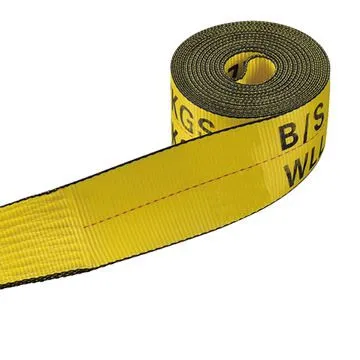- Afrikaans
- Albanian
- Amharic
- Arabic
- Armenian
- Azerbaijani
- Basque
- Belarusian
- Bengali
- Bosnian
- Bulgarian
- Catalan
- Cebuano
- Corsican
- Croatian
- Czech
- Danish
- Dutch
- English
- Esperanto
- Estonian
- French
- German
- Greek
- Hindi
- Indonesian
- irish
- Italian
- Japanese
- Korean
- Lao
- Malay
- Myanmar
- Norwegian
- Norwegian
- Polish
- Portuguese
- Romanian
- Russian
- Serbian
- Spanish
- Swedish
- Thai
- Turkish
- Ukrainian
- Uzbek
- Vietnamese
Лис . 15, 2024 16:36 Back to list
grid ceiling material names
Exploring Grid Ceiling Material Names A Guide to Modern Design Choices
In the realm of interior design and construction, the grid ceiling plays a vital role in enhancing both aesthetics and functionality. Often referred to as ceiling tiles or suspended ceilings, grid ceilings come in a variety of materials, each with its unique properties, advantages, and design implications. This article delves into the different types of grid ceiling materials, their characteristics, and how they can be integrated into various design environments.
1. Mineral Fiber Tiles
One of the most common materials used in grid ceilings is mineral fiber. Characterized by its excellent sound absorption and thermal insulation properties, mineral fiber tiles are often used in commercial spaces like offices, schools, and hospitals. These tiles are lightweight, easy to install, and available in a variety of textures and finishes. The natural, earthy tones of mineral fiber can provide a calming aesthetic, making them ideal for spaces focused on productivity or relaxation.
2. Acoustic Tiles
Acoustic ceiling tiles are specifically designed to control sound in a space. Made from materials such as mineral fiber, fiberglass, or other sound-absorbing substances, these tiles can significantly reduce ambient noise, making them perfect for environments like recording studios, conference rooms, and libraries. The range of acoustic tiles on the market includes options that mimic the appearance of traditional ceilings while still offering superior sound dampening qualities.
For a more modern and industrial aesthetic, metal ceiling tiles are a fantastic option. Available in various metals such as aluminum, steel, and copper, these tiles can add a sleek and polished look to any space. They are durable, fire-resistant, and can be used in both interior and exterior applications. Metal ceiling tiles can also be painted or finished to suit specific design themes, making them versatile choices for restaurants, retail stores, and contemporary office spaces.
4. PVC Ceiling Tiles
grid ceiling material names

Polyvinyl chloride (PVC) tiles are another popular choice for grid ceilings. These tiles are lightweight, water-resistant, and easy to clean, making them perfect for areas prone to moisture, such as bathrooms and kitchens. PVC tiles come in a wide array of colors, patterns, and textures, allowing for creative freedom in design. Additionally, they are often more economical than other materials, providing an affordable solution for budget-conscious projects.
5. Wood Ceiling Tiles
For those seeking warmth and a touch of nature, wood ceiling tiles offer an appealing alternative. These tiles can come in solid wood, engineered wood, or wood veneer, providing varied aesthetics and finishes. Wood tiles can enhance the acoustics of a space while also adding character and sophistication. They are often utilized in high-end residential projects, restaurants, and boutique hotels, where creating an inviting atmosphere is key.
6. Gypsum Ceiling Tiles
Gypsum ceiling tiles are known for their fire resistance and ability to provide a smooth finish. They are often utilized in office buildings and homes for a sleek, minimalist look. Gypsum tiles can be painted and are available in various textures, allowing for customization in design. Their lightweight nature makes installation straightforward, contributing to their popularity in both commercial and residential applications.
7. Fabric-Wrapped Panels
For an added layer of design flexibility, fabric-wrapped panels are gaining popularity in grid ceiling systems. These panels can be customized with various fabrics and colors to match or contrast with the surrounding décor. Beyond their aesthetic appeal, fabric-wrapped panels contribute to sound absorption, making them suitable for places like auditoriums, concert halls, and high-end office spaces.
Conclusion
The choice of grid ceiling materials significantly impacts the overall look, feel, and functionality of a space. From the practical benefits of mineral fiber and acoustic tiles to the stylish finishes of metal and wood, each material presents unique advantages that can enhance design choices. As interior design continues to evolve, so too do the options for grid ceiling materials, offering endless possibilities for creativity and innovation. When selecting materials, it is essential to consider the intended atmosphere, acoustic requirements, and visual impact to achieve a balanced and harmonious environment.
-
Transform Interiors with PVC Gypsum Ceiling: A Stylish, Durable, and Moisture-Resistant SolutionNewsMay.19,2025
-
The Smart Interior Upgrade: Discover the Durability and Versatility of Gypsum Ceiling Access Panel SolutionsNewsMay.19,2025
-
The Smart Choice for Interior Design: Discover the Value of PVC Gypsum Ceiling SolutionsNewsMay.19,2025
-
Mineral Fiber Ceiling Tiles: The Smart Blend of Performance and AestheticsNewsMay.19,2025
-
Mineral Fiber Ceiling Tiles: The Superior Choice Over Gypsum for Sound and Fire SafetyNewsMay.19,2025
-
Mineral Fiber Ceiling Tiles: Eco-Friendly Strength and Style for Every CeilingNewsMay.19,2025







